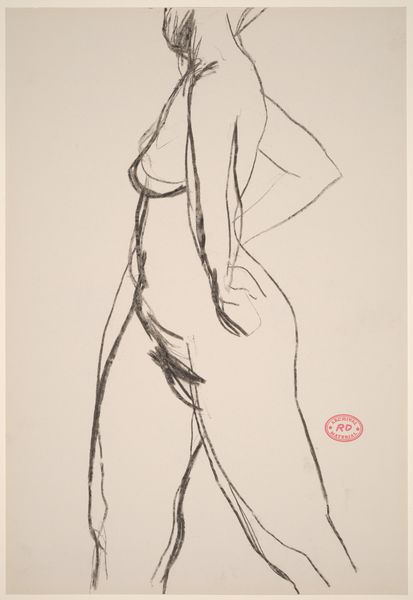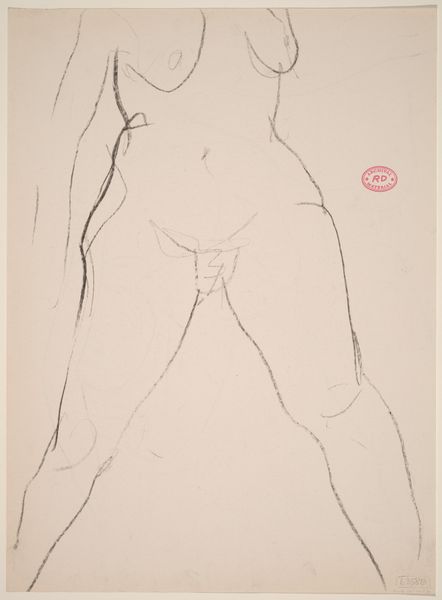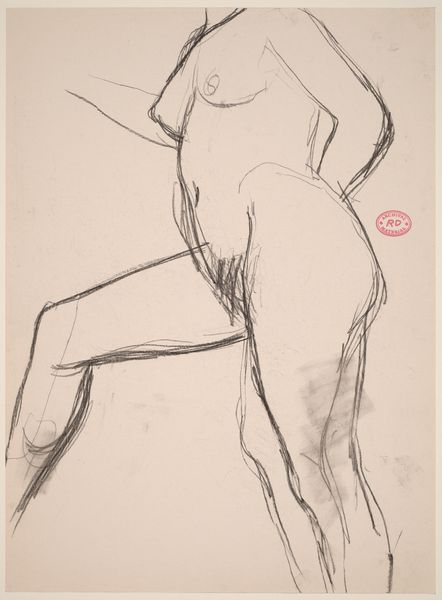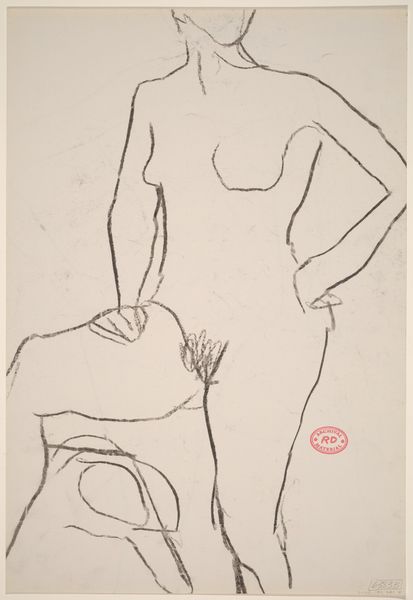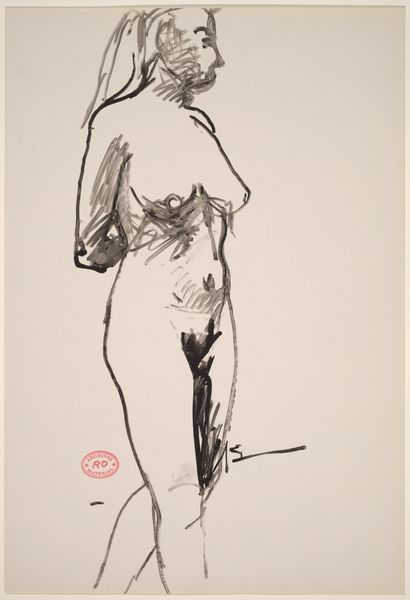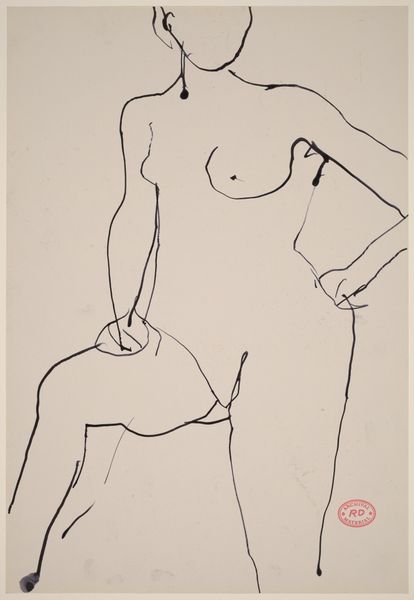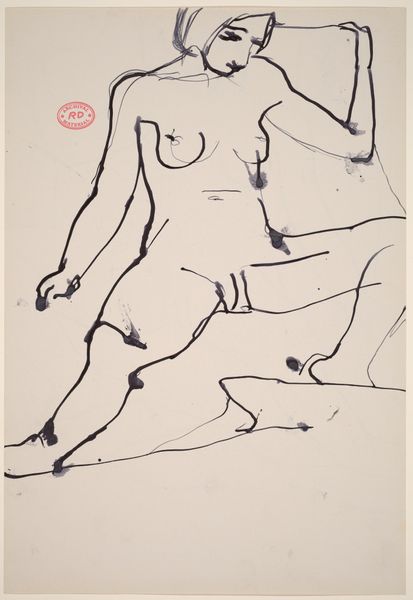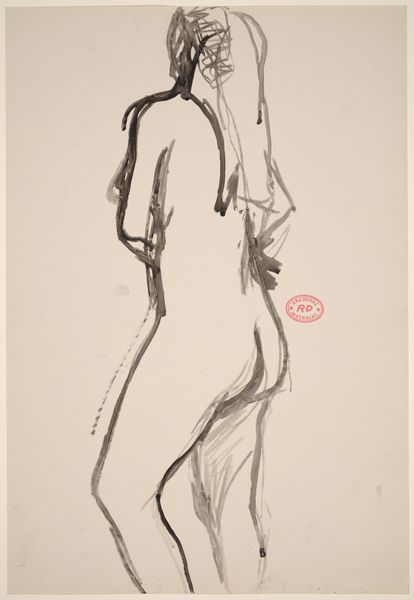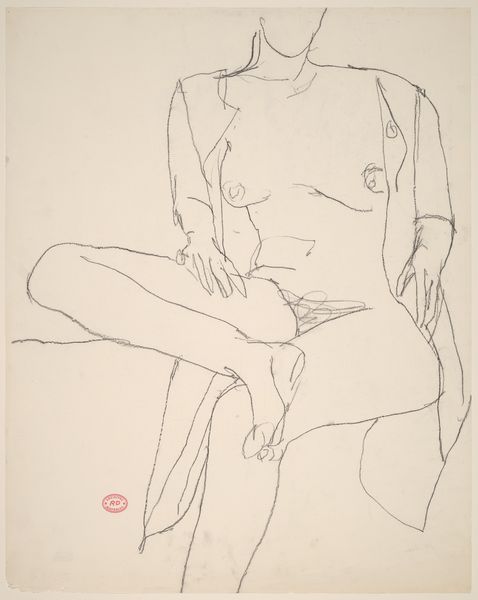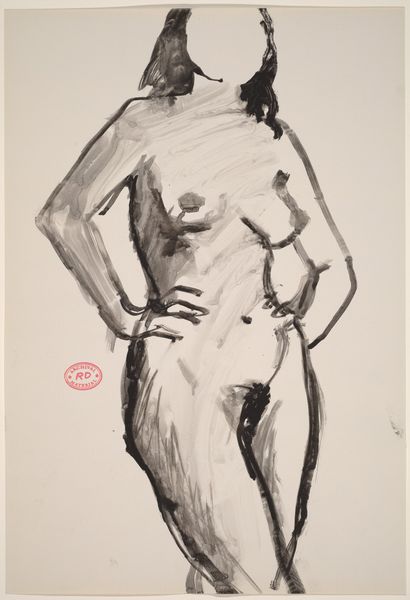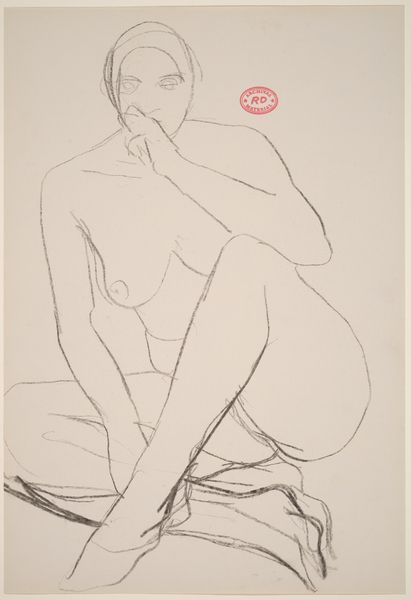![Untitled [female nude stepping up] by Richard Diebenkorn](/_next/image?url=https%3A%2F%2Fd2w8kbdekdi1gv.cloudfront.net%2FeyJidWNrZXQiOiAiYXJ0ZXJhLWltYWdlcy1idWNrZXQiLCAia2V5IjogImFydHdvcmtzL2ZhMTY2ZDc2LTRlZGQtNGVkNi05ZDE2LTk1NTA5OGJlMDIxMC9mYTE2NmQ3Ni00ZWRkLTRlZDYtOWQxNi05NTUwOThiZTAyMTBfZnVsbC5qcGciLCAiZWRpdHMiOiB7InJlc2l6ZSI6IHsid2lkdGgiOiAxOTIwLCAiaGVpZ2h0IjogMTkyMCwgImZpdCI6ICJpbnNpZGUifX19&w=3840&q=75)
drawing, graphite
#
abstract-expressionism
#
drawing
#
figuration
#
bay-area-figurative-movement
#
pencil drawing
#
graphite
#
nude
#
modernism
Dimensions: overall: 40.6 x 27.9 cm (16 x 11 in.)
Copyright: National Gallery of Art: CC0 1.0
Editor: This is "Untitled [female nude stepping up]" by Richard Diebenkorn, done sometime between 1955 and 1967. It’s a graphite drawing, and I’m struck by the simplicity of the lines and the pose – she seems both strong and vulnerable. What can you tell me about this piece? Curator: Diebenkorn’s shift toward figuration, like this nude, came during a fascinating period. Abstract Expressionism was dominant, particularly on the West Coast where Diebenkorn was working. However, there was a counter-movement brewing. What do you think this drawing says about the evolving artistic climate? Editor: I guess it's kind of a reaction against the total abstraction, a return to the human form. But it's not exactly traditional, right? The lines are so gestural and incomplete. Curator: Precisely. He acknowledges tradition, the academic study of the nude, but also questions its established rules. Look at how he uses negative space. Where is your eye drawn? Is it merely to the subject or elsewhere, perhaps in the act of becoming. He's not aiming for photorealistic perfection but is interested in capturing a feeling or essence. Where does this 'unfinished' element intersect with your understanding of modern art's purpose within public spheres at the time? Editor: So it's a comment on what art should be, both representing reality and abstracting it? Almost like questioning the museum's role of just displaying the perfected and traditionally beautiful? Curator: Exactly! The very act of exhibiting these studies in a public space reframes our understanding of artistic labor and aesthetic standards. The art institution plays an active part in forming not only its identity but also challenges conventional taste. How might his involvement with figuration have impacted public opinion towards Abstract Expressionism at the time? Editor: I never thought about the political side of art like that before, but now I realize that museums aren't neutral spaces. Thanks, that gives me a lot to think about! Curator: Absolutely! It's through understanding those tensions between aesthetics and cultural expectations, you can appreciate it fully.
Comments
No comments
Be the first to comment and join the conversation on the ultimate creative platform.
